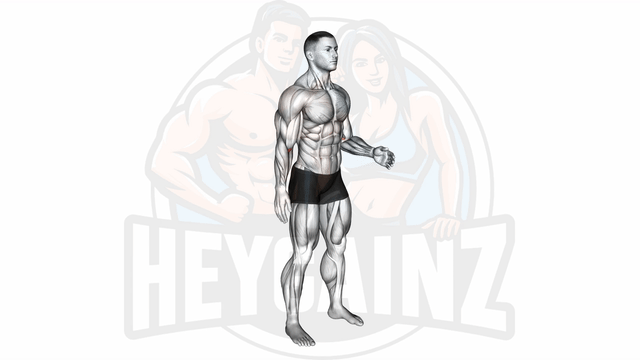
Instructions:
- 1Straighten your arm out in front of you
- 2Turn your palm upward and flex hand back
- 3Use your other hand to gently apply more pressure
- 4Hold this position for 15-30 seconds
- 5Perform the same step on the other arm
Tips:
- Engage your core to maintain balance
- Do not press too hard to avoid injury
- Breath deeply and rhythmically throughout the stretch
- Always maintain a correct posture
Forearm Pronation: Strengthening and Mobility for the Forearms
Forearm pronation is a key movement that involves rotating the forearm to turn the palm downward. This motion is essential in various daily activities and sports, making it crucial to understand its mechanics and include targeted exercises in your routine.
One of the benefits of focusing on forearm pronation exercises is improving strength and flexibility in the forearms. This is particularly important for athletes and individuals engaged in activities that require grip strength, such as weightlifting, rock climbing, or racquet sports. Additionally, enhancing forearm pronation can aid in preventing injuries related to overuse and improve overall functional mobility.
When performing exercises for forearm pronation, it's important to consider the muscles engaged during this movement. The primary muscles involved include the pronator teres and pronator quadratus, which play a pivotal role in forearm rotation. Incorporating exercises that involve both forearm pronation and supination can provide a comprehensive approach to developing strength and fullness in the forearms.
To effectively execute forearm pronation exercises, remember these essential tips:
- Warm-up: Always begin your routine with a proper warm-up to prepare your muscles and joints for the activity.
- Controlled Movements: Focus on maintaining smooth and controlled movements to maximize the effectiveness of the exercise.
- Range of Motion: Be mindful of your range of motion and any limitations that may arise due to tight muscles or previous injuries.
- Stretching: Incorporate stretching before and after exercises to promote flexibility and reduce tension in the forearms.
Understanding the biomechanics of forearm pronation can also enhance your knowledge of its role in functional movements. Typically, forearm pronation occurs in the transverse plane and around a vertical axis, emphasizing how we interact with objects in our environment. For those curious about the nuances, forearm pronation goniometry can provide insights into the angles and limits of this motion.
In conclusion, integrating forearm pronation exercises into your fitness regimen is essential for developing a strong and flexible forearm. Whether you are a seasoned athlete or just starting your fitness journey, these exercises will aid in improving performance and reducing the risk of injuries in various activities that require effective upper limb function.